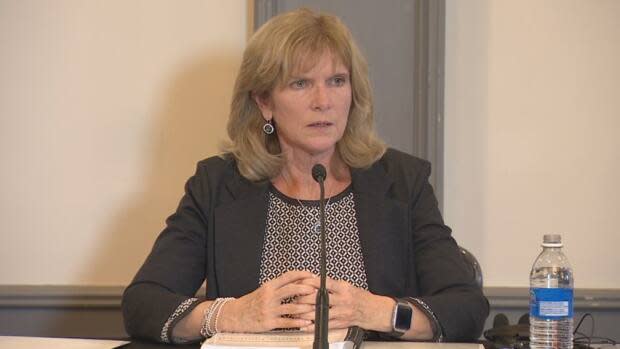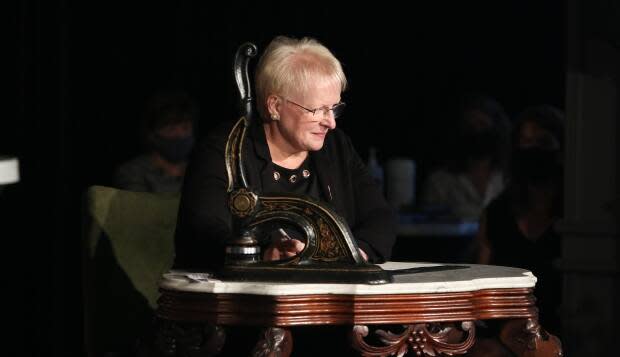Mayors blast 'terrible' rural ambulance response times
Mayors and community leaders in small–town New Brunswick say they weren't surprised at all by this week's scathing report by the auditor general about ambulance response times.
The audit shows that in many rural and remote communities, Ambulance New Brunswick fails to respond to 90 per cent of calls within its target of 22 minutes.
"It's terrible," said Belledune Mayor Joe Noel. "It shouldn't be allowed and there's no need for it."
But those shortfalls are obscured, and don't count against ANB's performance payments, because they're combined with better response times in urban centres for measuring performance--which is allowed under the company's contract.
Blackville Mayor Chris Hennessy said the report is a vindication for him.
"They basically bury the rural stats in the urban numbers so they never show the bad with the good," he said.
"I know people thought I was crazy when I was preaching about this for the last five years … so I'm glad somebody uncovered that."
Rural vs. urban response
The aggregation of the numbers allows Medavie Health Services New Brunswick, which operates the ambulance service, to collect $650,000 a year for hitting the broader 90-percent target in four large zones that include cities and towns.
"They're meeting them on the backs of the rural areas," Noel said.
"That's exactly what happens here. When an ambulance goes out in Campbellton or Bathurst, they take the ambulance from Belledune and send it to Bathurst or Campbellton to sit there, whether it gets a call or not...

"That's where the calls are and that's why they're doing it: because it makes their numbers look good."
Harvey Mayor Winston Gamblin said response times in the village are good when the ambulance happens to be at its local station.
But when it's been shifting elsewhere, paramedics have a hard time reaching some locations within 22 minutes.
"We feel that if you live in a rural area, you have to take second best, and that's the way it came out in the report yesterday -- that we're second class citizens and [they say] 'we'll get there when we can,'" he said.
Ambulance targets
Under Medavie's contract with the province, ambulances must hit response targets 90 per cent of the time for the organization to receive performance payments.
The targets are to reach the scene of a call within nine minutes in 16 urban areas and within 22 minutes everywhere else in New Brunswick.
The audit found that in 19 out of 67 communities, ANB fell short of the 90 per cent goal.
But because response times are blended together within four large zones, it "masked" the poor numbers in those rural, remote communities, Auditor General Kim Adair-MacPherson said Tuesday.

Her audit said the system "has introduced a bias toward achieving high performance in areas of greater population density, to the detriment of rural or remote communities where 911 calls occur less frequently."
Rural areas were at a disadvantage because the system is "reducing the emphasis on improving performance in those areas," allowing Medavie "to focus resources on urban areas while having decreased performance in outlying communities."
In a statement released Tuesday, Medavie Health Services New Brunswick president Richard Losier agreed the average response time "varies from community to community."
But he pointed out what Adair-MacPherson's audit acknowledged: that the contract doesn't rate performance community by community but in four large zones.
"MHSNB is always open and willing to work with our government partners to improve the services to the people of New Brunswick," he said.
Medavie mum
Medavie did not respond to a request Wednesday for an interview with Losier.
On Tuesday Health Minister Dorothy Shephard said she was talking to Medavie officials about renegotiating the contract, which was renewed in 2017 for another 10 years.
Noel said rural response times should carry more weight in measuring ambulance performance.
"When you're 25 minutes away from a hospital to start with, that's where you need the response times," he said.
Belledune had the lowest number of any community measured by the auditor general: ambulances reached their destination within 22 minutes in only 69 per cent of calls.

Marc Henrie, the former chair of the Saint-Paul local service district north of Moncton, said he was not surprised to see the Fords Mills ambulance station with the second-worst rate in the report.
Ambulances based there reach calls within 22 minutes in only 70 per cent of cases.
"The auditor general just released proof that rural citizens are sadly taken as citizens of a second-class," he said.
Henrie chaired the LSD when Ambulance New Brunswick decided to put its bay in Fords Mills rather than in another location closer to Saint-Paul and Route 126, where he says most people in the area live.
"The numbers are not surprising at all," he said.
Sometimes ambulances responding to calls in the Saint-Paul area are sent from Salisbury, even though Moncton is closer. Henrie believes it's so ambulances based in Moncton can stay there and respond to calls in and around the city.
"It's clear that it's not strategic and it's not what's for the well-being in an emergency situation," he says.
Gamblin says he's glad to see the auditor general put the spotlight on the problem but worries it will discourage people from moving to smaller communities. "It's not an advertisement for rural areas," he says.

 Yahoo Finance
Yahoo Finance 